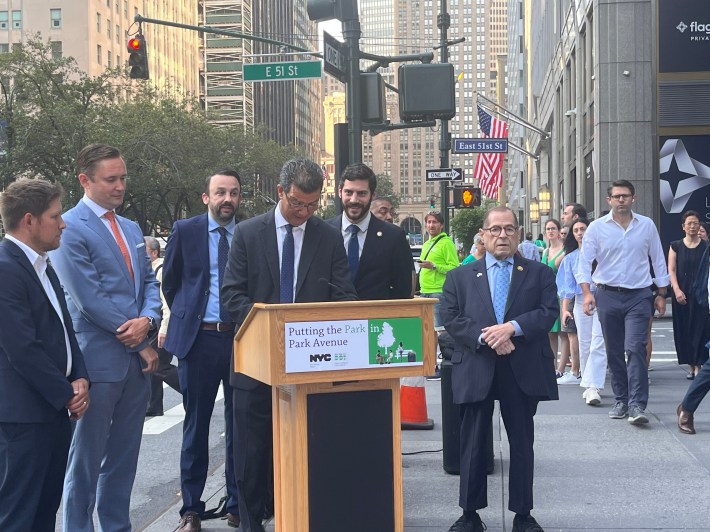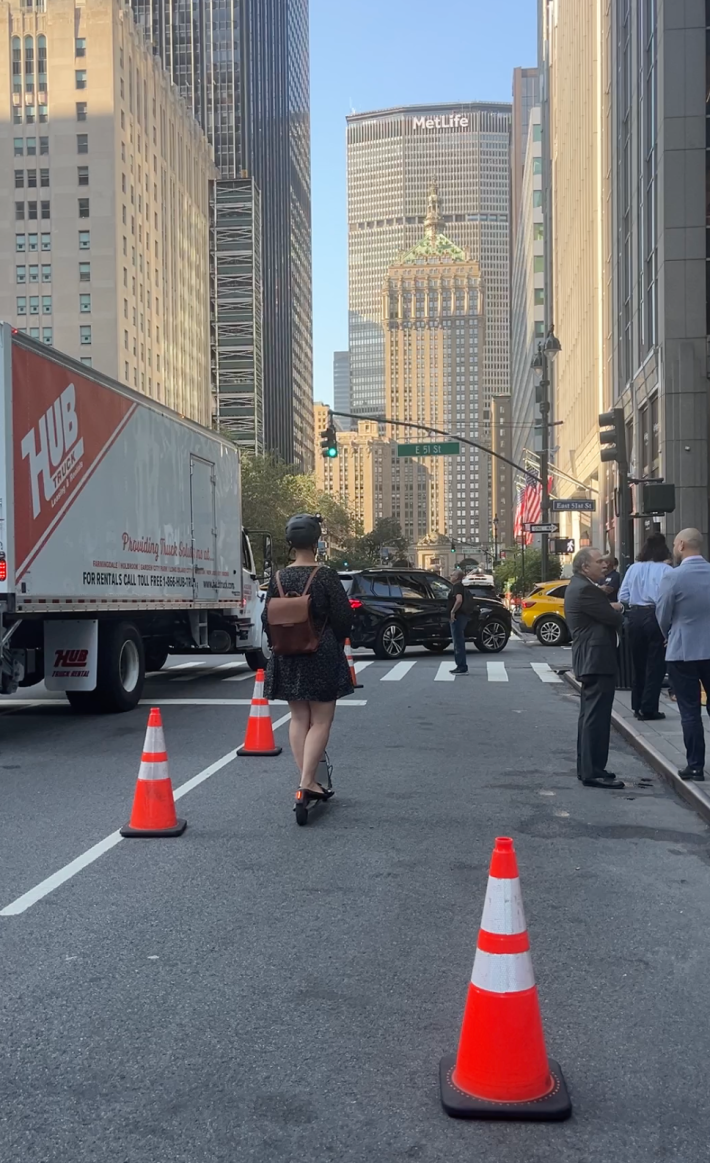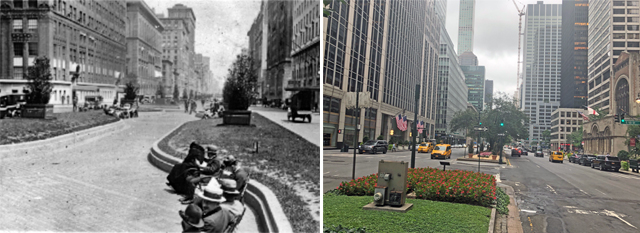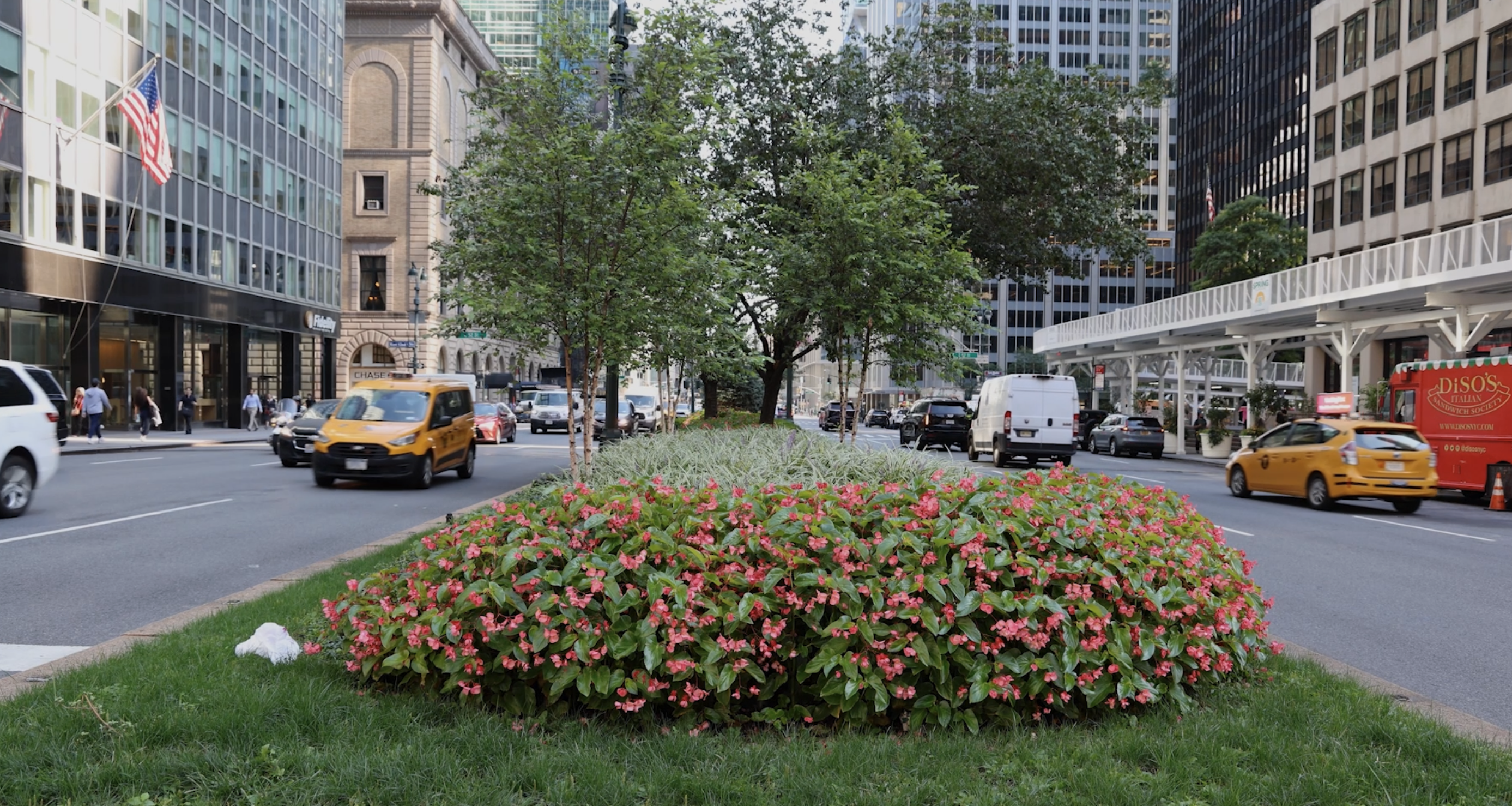The city moved forward with its notion of widening the medians along 11 blocks of Park Avenue north of Grand Central Terminal — a project the city calls "putting the 'Park' back in Park Avenue" — but cycling advocates are concerned that the city will miss a once-in-a-generation opportunity to bring a protected bike lane to the transit-free corridor.

On Tuesday, Transportation Commissioner Ydanis Rodríguez said the city had opened a call for proposals to redesign and widen the medians between 46th and 57th streets — which were once grand spaces for walking and relaxing ... until they were narrowed for the convenience of car drivers.
“We want to redefine the iconic park avenue as a greener, safer and more welcoming corridor for all New Yorkers,” Rodriguez said at a presser at E. 51st St.

As Rodríguez and other government officials spoke, however, some of those New Yorkers — cyclists and scooter riders — rode by unprotected in the avenue’s travel lanes. Streetsblog asked Rodriguez if the obvious need for a safe route for non-drivers meant that the city would consider a protected bike lane. The commissioner wouldn't commit to anything beyond widening the median by 20 feet — which could require two car lanes to be repurposed (not that he said that, either).

“All ideas are welcome,” Rodríguez told Streetsblog. “There's no doubt that the numbers of cyclists using bikes and e-bikes, using bikes to deliver food, as we place those orders when we are resting in our apartments, are very important. So as a city, we also understand that whatever we do should always include feedback about expanding space for cyclists.”
The section of Park Avenue could be a key link in a robust bike network for Manhattan’s east side. Currently between East 26th and 58th streets there are no protected bike lanes west of Second Avenue and east of Sixth Avenue. Advocates are hoping to see a protected bike lane as part of the design in order to begin to fill that hole.
“Look at the bike map, in that 50s and 40s stretch there’s no bike lane between Second Avenue and Sixth Avenue,” said Jon Orcutt, the advocacy director of Bike New York and former DOT official. "It’s time for the East Side to take one for the team."

DOT has been talking about redesigning Park Avenue between Grand Central Terminal and 57th Street since 2017, when a real estate firm launched a design competition — though some proposals resembled futuristic shopping malls, not a people-focused urban space.
Then in 2020 the DOT quietly launched a questionnaire, which included four potential designs, that disappeared from the department's website. In 2022, a state-city plan called Making New York Work For Everyone mentioned the median widening as a future project, putting it back on the map.

Any widening of the median would at least partially recreate the look of Park Avenue in the late 19th and early 20th centuries, when the wide median drew pedestrians and promenaders from all over the city, if not the world. Memorialized in countless sepia postcards, it was considered a prime New York attraction and drew comparisons to the grandest boulevards of Paris.
In 1927, however, it lost much of that space to a road widening for growing car traffic — and since has degenerated into a polluted car sewer that is enervating for residents and businesses and dangerous for pedestrians.
Now it is uniquely ripe for redesign because the MTA is currently renovating the roofing over multiple commuter rail tracks that run under Park Avenue. In addition, it's one of the only Manhattan avenue without a bus route. And Orcutt pointed out that a bike lane, if installed, would only be 11 blocks, but you have to start somewhere.
“DOT’s strategy has always been to do a stretch [of new bike lane] and then create demand to extend it," he said, mentioning the new bike lane on Third Avenue north of 58th Street. "It’s one stranded stretch, but it is obvious what should be done next. This gives the city a great opportunity to create a model stretch of Park Avenue.”
In a series of speeches, only one politician present mentioned bikes: Rep. Jerry Nadler (D- Manhattan) said he wanted to see Park Avenue become more inviting for cycling.
"This redesign will also help promote more sustainable transit options, including Citi Bike, to lower emissions and limit vehicular traffic in the area,” he said.
The city's Request for Proposals, which DOT declined to provide to reporters, will be open for four weeks and is only open to women and minority-owned firms. After the DOT picks a bidder early next year, it will begin a lengthy public input process.
“This is more than a once-in-a-generation opportunity," Orcutt said. "When they rebuild [the train shed], it’s going to stand for another century."






